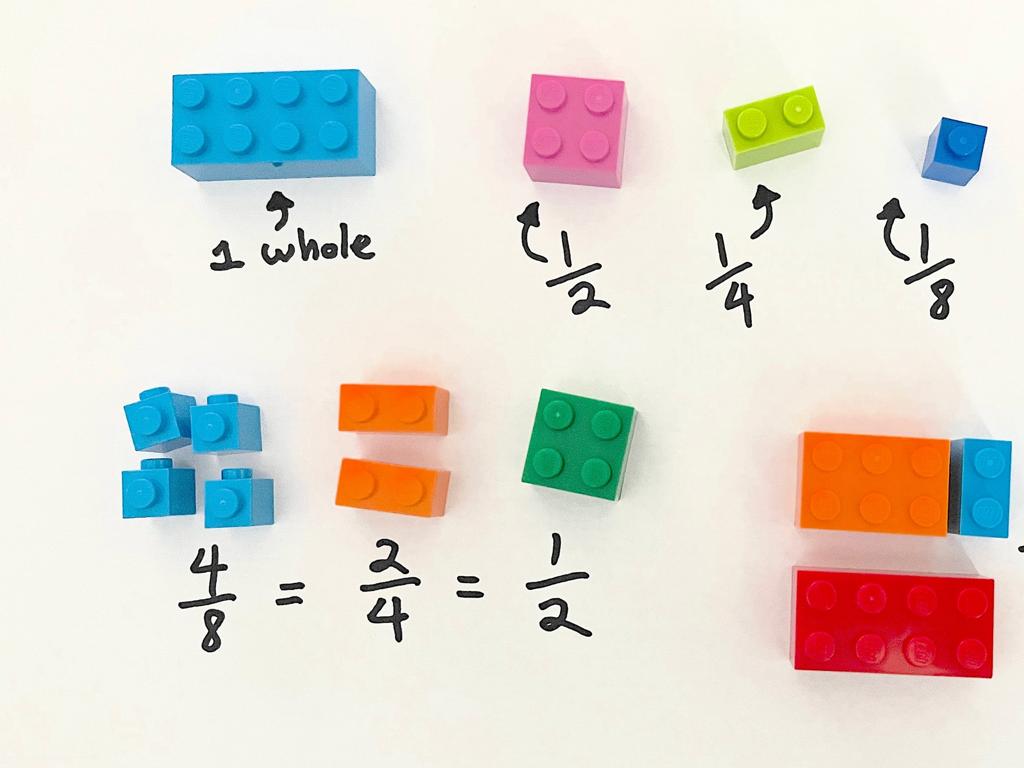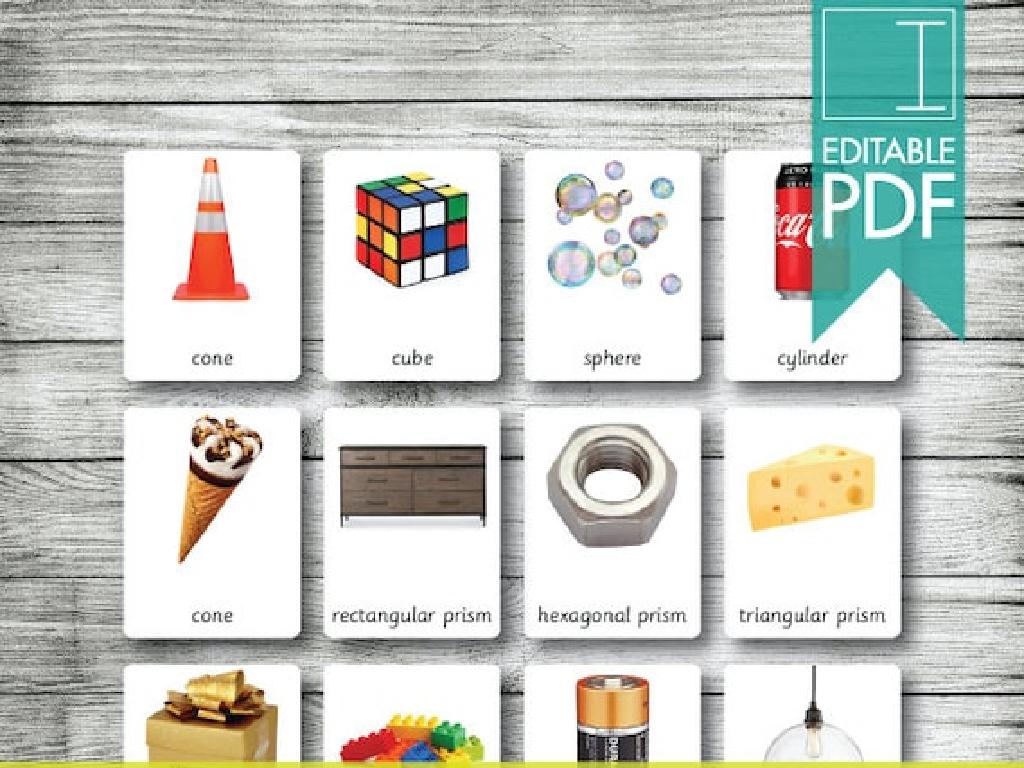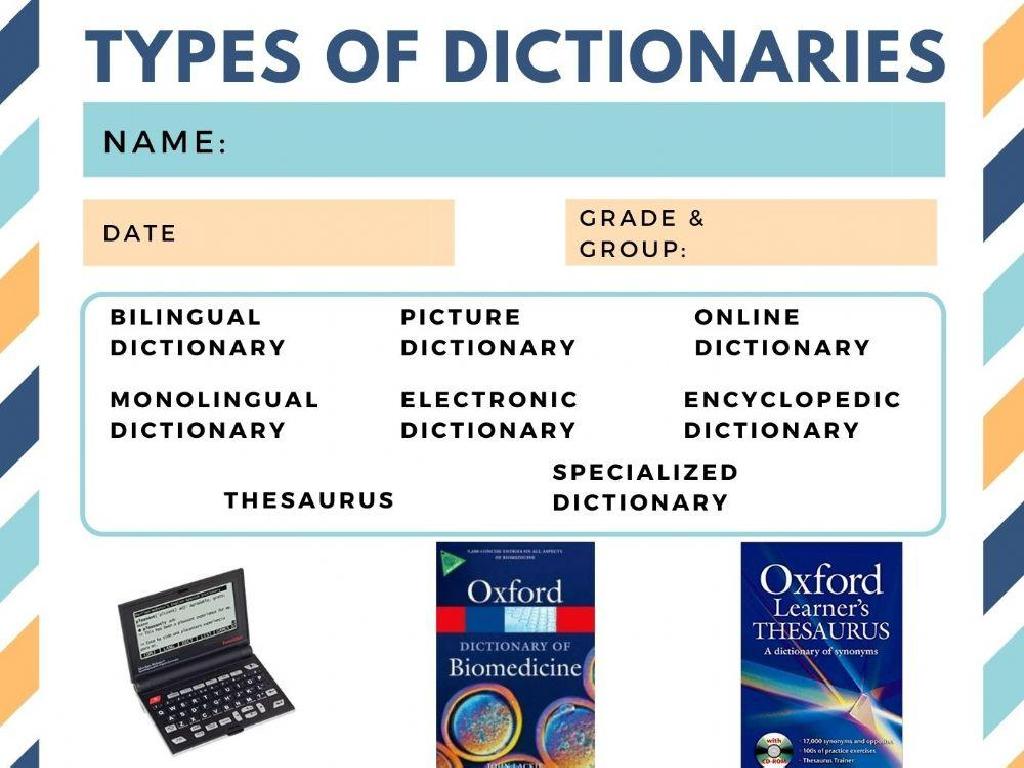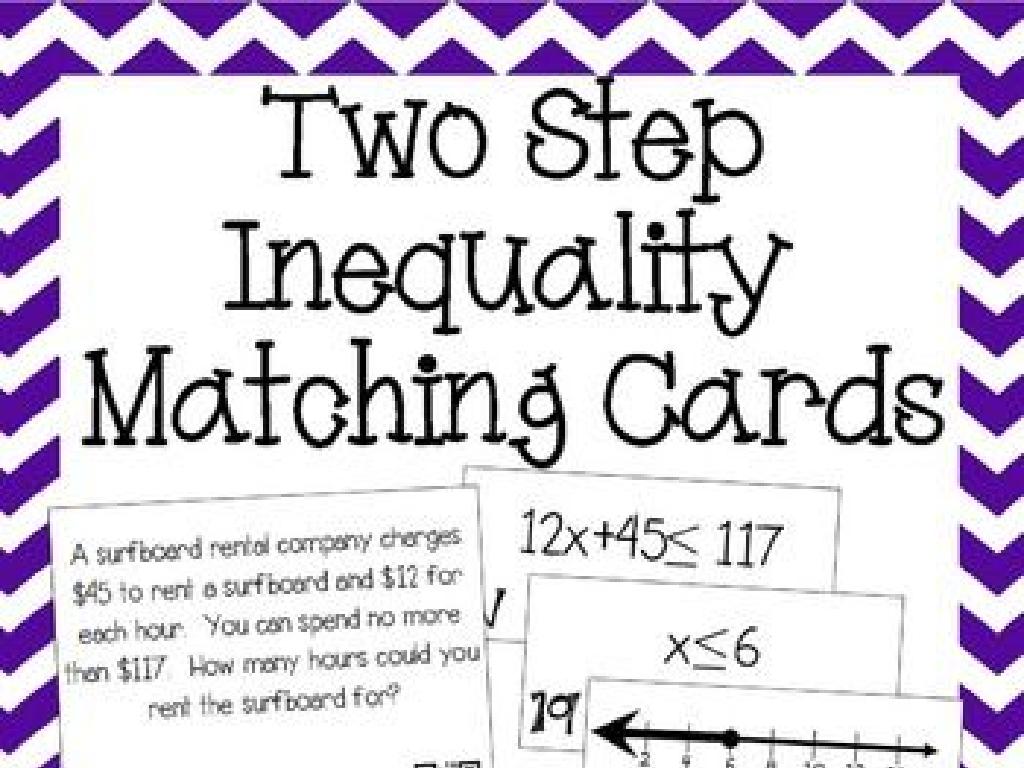Add And Subtract Mixed Metric Units
Subject: Math
Grade: Fourth grade
Topic: Metric Units Of Measurement
Please LOG IN to download the presentation. Access is available to registered users only.
View More Content
Welcome to Metric Measurements!
– Learn metric units of measurement
– Units like meters, liters, and grams
– Importance of accurate measurement
– Accurate measurements are crucial in recipes, construction, and science experiments
– Adding mixed metric units
– Combine different units, like 1m + 50cm
– Subtracting mixed metric units
– Take away amounts, like 1kg – 200g
|
This slide introduces students to the concept of metric measurements, which are used worldwide for scientific and everyday measurements. Emphasize the importance of understanding and using units like meters for length, liters for volume, and grams for weight. Accurate measurement is essential in many aspects of life, from cooking to building things. Today’s lesson will focus on adding and subtracting mixed metric units, which is a vital skill for solving real-world problems. For example, combining lengths in meters and centimeters, or weights in kilograms and grams. Encourage students to think about where they encounter measurements in their daily lives and why precision matters.
Understanding Metric Units
– The Metric System basics
– Meters for length, Liters for volume, Grams for weight
– Tools for measuring metric units
– Use a ruler for meters, a measuring cup for liters, and a scale for grams
– Everyday measurement examples
– Measure your height in meters, water in liters, and fruits in grams
– Practice adding & subtracting units
|
This slide introduces students to the concept of the Metric System, which is used worldwide for scientific and everyday measurements. Emphasize the three basic units: meters for length, liters for volume, and grams for weight. Show the common tools used for measuring these units, such as rulers, measuring cups, and scales. Provide relatable examples like measuring their height, the amount of water for a recipe, or the weight of produce. After the introduction, engage students with activities where they practice adding and subtracting different metric units to reinforce their understanding. For example, adding the weight of two fruits together or subtracting the amount of water used from a full cup.
Adding Metric Units
– Line up units for addition
– Ensure meters (m) align with meters, centimeters (cm) with centimeters
– Add units with same dimensions
– Only add metric units that measure the same thing, like length with length
– Example: Lengths in m and cm
– Add 2m + 50cm: Convert 50cm to 0.5m, then add: 2m + 0.5m = 2.5m
– Practice with class exercises
|
When teaching students to add metric units, start by emphasizing the importance of aligning the same units. Show them how to convert units if necessary, such as turning centimeters into meters before adding. Use clear examples, like adding lengths measured in meters and centimeters, to illustrate the concept. After explaining, provide class exercises where students can practice adding different metric units together, ensuring they understand the process of lining up and converting units for accurate addition.
Subtracting Metric Units
– Align units for subtraction
– Ensure meters align with meters, liters with liters, etc.
– Subtract same-dimension units
– Only subtract grams from grams, liters from liters, and so on.
– Example: Weights in kg and g
– Subtract 1 kg 500 g from 3 kg 200 g. Convert 1 kg to 1000 g first!
– Practice with real-life objects
|
When teaching subtraction of metric units, start by emphasizing the importance of aligning the same units vertically for accurate subtraction. Use examples where students subtract units like grams from grams or liters from liters, ensuring they understand that units must be the same. For mixed units, such as kilograms and grams, demonstrate how to convert to the smaller unit before subtracting. Use an example like subtracting weights to solidify the concept. Encourage students to bring items from home to practice subtracting real-life objects’ weights or volumes, enhancing their understanding of the concept.
Understanding Mixed Metric Units
– What are mixed metric units?
– Units like meters and centimeters used together
– Reasons for mixing units
– To measure more precisely when values span multiple units
– Example: Combining meters & centimeters
– 1 meter and 35 centimeters is the same as 135 centimeters
– Practice with mixed units
|
This slide introduces the concept of mixed metric units, which is when we use two different units of measurement together, such as meters and centimeters. It’s important for students to understand that we mix units to achieve greater precision in measurement, especially when the quantities we measure don’t fit neatly into one unit. For example, a height or length might be best expressed using both meters and centimeters. Provide students with a clear example, such as combining 1 meter with 35 centimeters to make 135 centimeters. Encourage students to practice adding and subtracting mixed units to become comfortable with the concept. This foundational understanding will be crucial for more complex math skills later on.
Converting Metric Units
– Understand unit conversion
– Learn conversion factors
– Use multiplication or division to change units
– Convert 500 cm to meters
– 500 cm equals 5 meters, because 100 cm is 1 meter
– Practice with more examples
– Try converting 2500 cm or 75 meters to other units
|
This slide introduces students to the concept of converting between different metric units. Start by explaining that conversion is a way to express the same measurement in different units. Introduce conversion factors as tools that help us convert from one unit to another, such as knowing that 100 centimeters make up 1 meter. Use the example of converting 500 centimeters to meters to illustrate the process, and then encourage students to practice with additional examples. Provide a variety of conversion problems for students to solve, reinforcing the concept and ensuring they understand how to apply conversion factors in different situations.
Adding and Subtracting Mixed Metric Units
– Steps for mixed unit operations
– Write down the numbers, align by units, then add or subtract.
– Convert units before calculations
– Ensure all units are the same (e.g., convert meters to centimeters).
– Example: 3m 40cm – 1m 95cm
– Convert 3m to 300cm, then subtract: 340cm – 195cm = 145cm.
– Practice with different measures
|
When teaching students to add and subtract mixed metric units, start by explaining the importance of aligning the same units and converting them to the same scale before performing any operations. Use the example of 3 meters and 40 centimeters minus 1 meter and 95 centimeters to illustrate the process: first, convert meters to centimeters, then perform the subtraction. After explaining the concept, provide various measures for students to practice, such as adding lengths in meters and centimeters or subtracting weights in kilograms and grams. This will help solidify their understanding of mixed unit operations.
Let’s Practice Together: Mixed Metric Units
– Add 2m 50cm and 1m 75cm
Combine meters and centimeters: 2m + 1m = 3m, 50cm + 75cm = 125cm, so 3m 125cm
– Subtract 4kg 500g from 5kg 800g
Subtract grams from grams, then kilograms: 800g – 500g = 300g, 5kg – 4kg = 1kg, so 1kg 300g
– Pair up for group activity
– Solve problems with a partner
Work together to find solutions for mixed unit problems
|
This slide is designed for an interactive class activity. Start by demonstrating the first two practice problems on the board, explaining step by step. For problem 1, show how to add meters to meters and centimeters to centimeters, then combine for the total. For problem 2, demonstrate subtracting grams from grams and kilograms from kilograms separately before combining them. After the demonstration, have the students pair up and provide them with additional mixed metric unit problems to solve together. This encourages collaboration and allows them to apply what they’ve learned. As a teacher, circulate the room to assist pairs as needed and ensure understanding. Possible activities for different pairs could include converting units before addition or subtraction, comparing results with other pairs, or creating their own problems to challenge classmates.
Class Activity: Metric Unit Scavenger Hunt
– Find items to measure in class
– Record measurements in mixed units
– Use centimeters, meters, and grams
– Share findings with the class
– Explain the measurement process
– Discuss how you chose the unit and tool
|
This interactive activity is designed to help students apply their knowledge of metric units in a fun and engaging way. Students will search for items in the classroom that they can measure, using a variety of metric units such as centimeters for smaller items, meters for larger distances, and grams for weight. They should record their measurements using mixed units, for example, 1 meter and 34 centimeters. After the hunt, students will present their findings to the class, explaining the items they chose to measure, the units and tools they used, and why. This will reinforce their understanding of when to use different metric units and how to combine them. Prepare a list of suggested items and tools for measurement to guide the students. Encourage them to explain why they chose a particular unit of measurement for each item.
Conclusion: Mastering Metric Units
– Review adding & subtracting metrics
– Practice is key to mastery
Regular practice solidifies understanding
– Homework: Metric units worksheet
Complete the worksheet to apply what you’ve learned
– Bring questions to next class
We’ll address any difficulties in our next session
|
This slide wraps up the lesson on adding and subtracting mixed metric units. Emphasize the importance of practice in mastering math skills. For homework, students are assigned a worksheet that includes a variety of problems on mixed metric units to reinforce today’s lesson. Encourage students to attempt all problems and bring up any questions or challenges they encounter to the next class. This will help identify areas that need further clarification and ensure that all students are on track with their understanding of metric units.






